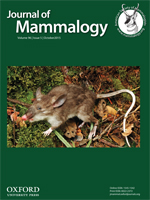Tropical forests support a rich biodiversity of terrestrial mammals, yet our knowledge of the conservation of forest reserves is lacking. We investigate the relationship between human activities and the abundance of medium-sized terrestrial mammals within 4 forest reserves in Uganda. These reserves allow firewood collection, timber cutting, gardening, and pole cutting. Illegal hunting also takes place. We found a general decline in terrestrial mammal signs in the reserves compared to the better protected adjacent Kibale National Park. Signs of aardvarks, bushbucks, bush pigs, duikers (blue and red), giant pangolin, giant forest hogs, porcupines, and jackals are still present in some of our reserves.
How to translate text using browser tools
29 September 2015
How do Human Activities Influence the Status and Distribution of Terrestrial Mammals in Forest Reserves?
Sam Mugume,
Gilbert Isabirye-Basuta,
Emily Otali,
Rafael Reyna-Hurtado,
Colin A. Chapman
ACCESS THE FULL ARTICLE

Journal of Mammalogy
Vol. 96 • No. 5
October 2015
Vol. 96 • No. 5
October 2015
bush pig
bushbuck
duiker
forest reserves
giant forest hog
pangolin
terrestrial mammals




